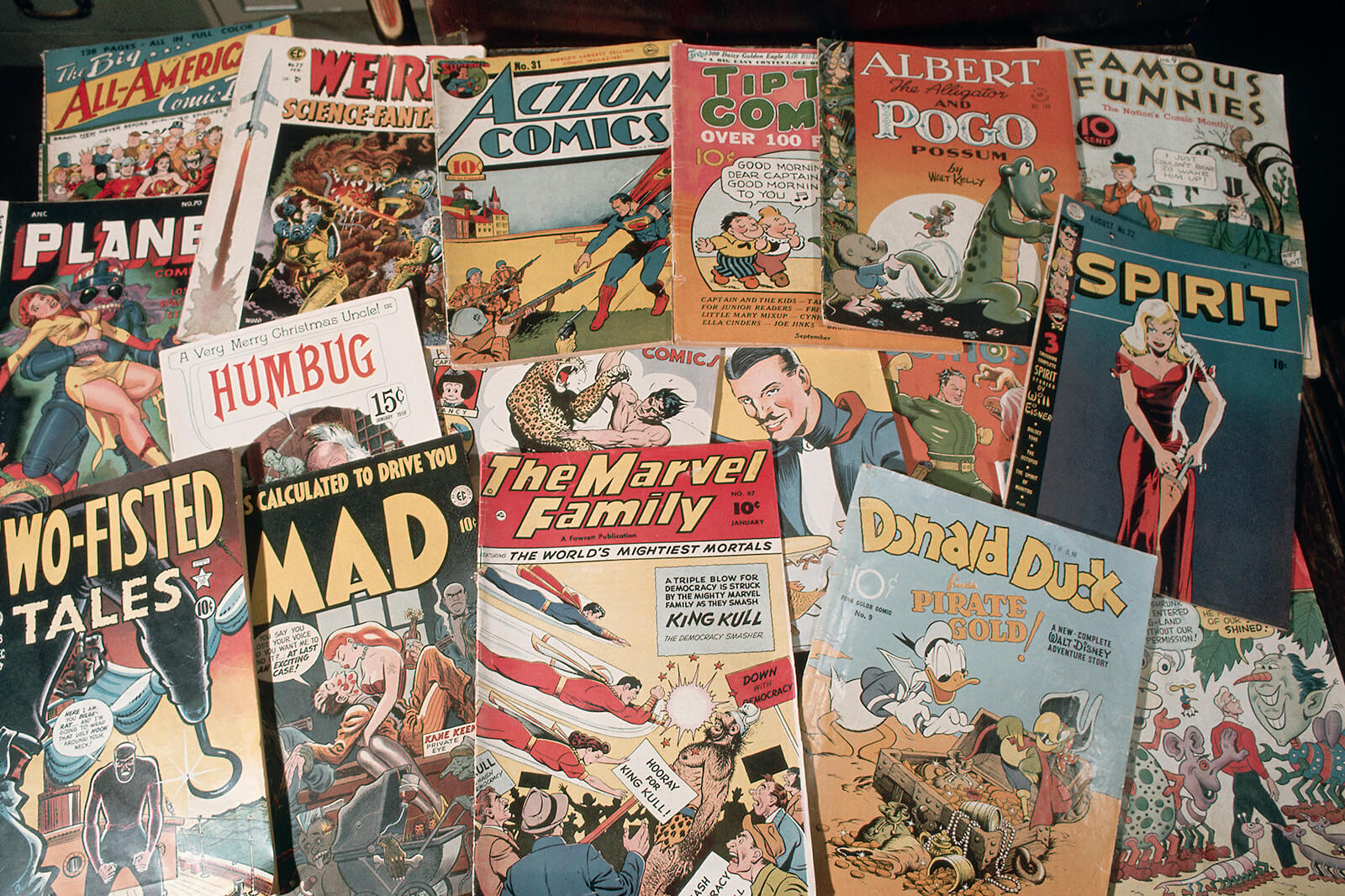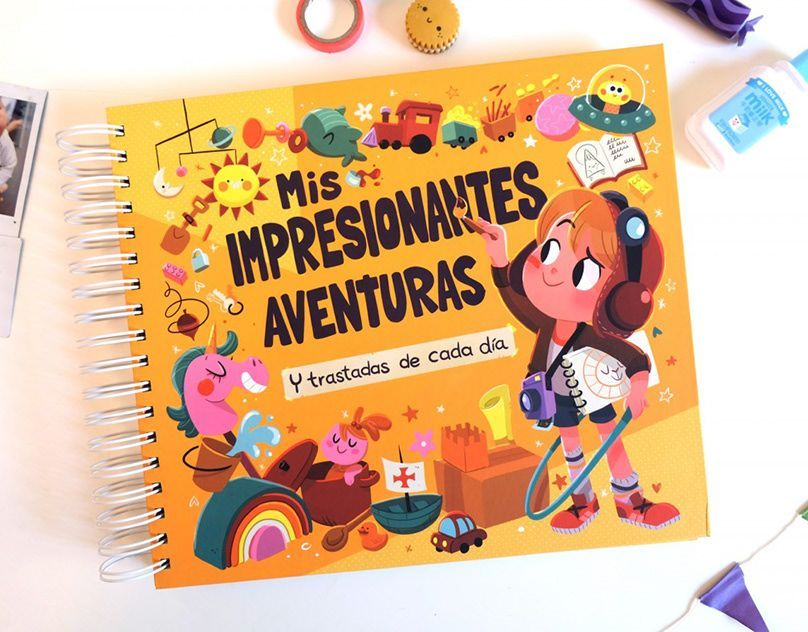faint mae'n ei gostio i argraffu llyfr comic
Nid prosiect yn unig yw creu llyfr comic; mae'n angerdd sy'n cyfuno adrodd straeon, celfyddyd, ac ysbryd entrepreneuraidd. I lawer o artistiaid ac awduron, gall y freuddwyd o weld eu cymeriadau yn neidio oddi ar y dudalen ac i ddwylo darllenwyr fod yn gyffrous ac yn frawychus. Mae'r broses yn cynnwys oriau di-ri o drafod syniadau, braslunio, adolygu, ac yn y pen draw, cynhyrchu cynnyrch diriaethol sy'n adlewyrchu eich gweledigaeth unigryw. Fel ffatri argraffu llyfrau, rydym wedi gweld â’n llygaid ein hunain daith drawsnewidiol crewyr di-rif - o’r syniadau cychwynnol i’r copïau printiedig terfynol yn barod i’w dosbarthu.
Yn yr oes ddigidol sydd ohoni, mae'r dirwedd ar gyfer crewyr llyfrau comig wedi esblygu'n ddramatig. Bellach mae gan artistiaid annibynnol fynediad at gyfoeth o adnoddau a llwyfannau sy’n eu grymuso i gyhoeddi eu gwaith heb fod angen porthorion traddodiadol. Mae’r democrateiddio hwn o’r broses gyhoeddi yn golygu y gall unrhyw un sydd â stori i’w hadrodd a’r awydd i’w rhoi’n fyw wneud hynny. Fodd bynnag, er mwyn llywio cymhlethdodau cynhyrchu llyfrau comig mae angen dealltwriaeth drylwyr o'r costau sy'n gysylltiedig â phob cam o'r daith.
Nod y canllaw cynhwysfawr hwn yw rhoi mewnwelediad hanfodol i ddarpar grewyr llyfrau comig i'r costau a'r prosesau sy'n gysylltiedig â dylunio, argraffu a hunan-gyhoeddi eu gwaith. P'un a ydych chi'n greawdwr am y tro cyntaf neu'n artist profiadol sydd am ehangu eich portffolio, ein nod yw rhoi'r wybodaeth sydd ei hangen arnoch i gychwyn ar y daith greadigol hon yn hyderus. O gysyniadoli i farchnata, byddwn yn dadansoddi pob cydran, gan eich helpu i wneud penderfyniadau gwybodus sy'n cyd-fynd â'ch gweledigaeth artistig a'ch nodau ariannol.
Tabl Cynnwys
1. Deall Cost Creu Llyfr Comig
Cyn plymio i fyd cyhoeddi llyfrau comig, mae'n hanfodol deall y costau amrywiol sy'n gysylltiedig â'r broses. Mae pob cam o greu llyfrau comig - o'r cysyniadu i'r argraffu - yn arwain at gostau penodol. Byddwn yn dyrannu'r cydrannau hyn i roi dealltwriaeth glir i chi o'r hyn i'w ddisgwyl.
1.1 Camau Cynhyrchu Llyfr Comig
Mae creu llyfr comic yn cynnwys sawl cam gwahanol, pob un â'i gostau cysylltiedig:
-
Datblygu cysyniad: Mae'r cam cychwynnol hwn yn cynnwys taflu syniadau, dylunio cymeriadau, a phlotio'r stori. Mae'n hanfodol buddsoddi amser yn y cyfnod hwn gan ei fod yn gosod y sylfaen ar gyfer eich comic cyfan. Efallai y byddwch am gymryd rhan mewn brasluniau cymeriad, ysgrifennu cefndiroedd manwl, ac archwilio arcau stori amrywiol. Er y gall y cam hwn ymddangos yn rhydd, mae'r amser a'r ymdrech a fuddsoddir yn amhrisiadwy. Ystyriwch dreulio amser ar ddatblygu cymeriad i greu ffigurau deniadol, y gellir eu cyfnewid a fydd yn atseinio eich cynulleidfa.
-
Creu Gwaith Celf: Mae'r cam hwn yn cynnwys trosi eich syniadau i ffurf weledol, boed hynny trwy dechnegau traddodiadol wedi'u tynnu â llaw neu ddarlunio digidol. Mae'r dewis rhwng dulliau yn effeithio'n sylweddol ar eich cyllideb a'ch allbwn creadigol. Os ydych chi'n gweithio gyda thîm o artistiaid, gall costau gynyddu, felly mae'n bwysig trafod prisiau a therfynau amser ymlaen llaw. Yn ogystal, ystyriwch yr amser sydd ei angen ar gyfer adolygiadau a golygiadau, gan y gall hyn ddylanwadu ymhellach ar eich cyllideb.
-
Argraffu: Unwaith y bydd eich gwaith celf yn barod, y cam nesaf yw argraffu. Bydd y cam hwn yn arwain at gostau yn seiliedig ar y manylebau a ddewiswyd, megis maint, lliw, ansawdd papur, a thechnegau rhwymo. Mae'n hanfodol dewis gwasanaeth argraffu dibynadwy a all gynhyrchu printiau o ansawdd uchel tra'n cynnig prisiau cystadleuol.
-
Marchnata: Dim ond hanner y daith yw creu llyfr comic; mae'r hanner arall yn ymwneud â hyrwyddo eich gwaith i gyrraedd darpar ddarllenwyr yn effeithiol. Gall y strategaethau marchnata a ddefnyddiwch amrywio o ymdrechion ar lawr gwlad i wasanaethau proffesiynol. Gall ymgyrch farchnata wedi'i chynllunio'n dda effeithio'n sylweddol ar welededd a gwerthiant eich comic.
1.2 Costau Cyfartalog dan sylw
Er y gall yr union gostau amrywio'n fawr, gallwn ddarparu ffigur maes amlwg ar gyfer pob cam i'ch helpu i gyllidebu'n effeithiol. Gall yr ystod ar gyfer creu llyfr comig - o'r cysyniad i'r print - fod yn unrhyw le o $1,000 i $5,000, yn dibynnu ar y dewisiadau a wnewch ar hyd y ffordd.
Dyma ddadansoddiad o'r hyn y gallai pob cam ei gostio fel arfer:
- Datblygu cysyniad: $0 i $500 (buddsoddiad amser yn bennaf)
- Creu Gwaith Celf: $300 i $2,000 (yn dibynnu a ydych chi'n llogi artistiaid neu'n ei greu eich hun)
- Argraffu: $500 i $3,000 (yn seiliedig ar rediad argraffu, manylebau, ac ansawdd)
- Marchnata: $500 i $1,000 (ar gyfer deunyddiau hyrwyddo, hysbysebion a digwyddiadau)
Gyda chynllunio priodol a dyrannu adnoddau, gallwch lywio'r costau hyn yn effeithiol ac osgoi treuliau annisgwyl.
2. Costau Cychwyn ar gyfer Creu Llyfr Comig
Mae deall y buddsoddiad cychwynnol sydd ei angen i lansio eich prosiect llyfrau comig yn hollbwysig. Gallwch fynd at greu comig trwy ddulliau amrywiol: traddodiadol, digidol, neu ddull hybrid. Mae gan bob dull wahanol gostau a manteision.
2.1 Cyflenwadau Celf Traddodiadol
Os dewiswch ddulliau traddodiadol, bydd angen amrywiaeth o gyflenwadau celf arnoch. Isod mae dadansoddiad o eitemau hanfodol a'u costau bras:
-
Bwrdd Darlunio: Mae bwrdd lluniadu proffesiynol neu fwrdd drafftio yn hanfodol ar gyfer gwaith difrifol. Mae'r prisiau'n amrywio o $100 i dros $1,000, yn dibynnu ar y cymhlethdod a'r nodweddion, megis onglau addasadwy neu storfa adeiledig.
-
Pensiliau, ysgrifbinnau, a brwsys: Disgwyliwch wario rhwng $20 a $150 ar gyfer setiau ansawdd. Mae setiau sylfaenol wedi'u teilwra ar gyfer artistiaid comig fel arfer yn ddigon, ond ystyriwch fuddsoddi mewn offer pen uwch os yw'ch cyllideb yn caniatáu hynny. Yn aml mae'n well gan artistiaid bensiliau mecanyddol ar gyfer llinellau manwl gywir a phennau brwsh ar gyfer hylifedd.
-
Papur: Mae papur Bryste yn ffefryn ymhlith artistiaid comig oherwydd ei wydnwch a'i amlochredd. Mae bloc o bapur Bryste (20 tudalen, 9″ x 12″) yn costio tua $20, tra gall dalennau mwy (19″ x 24″) osod $30 i $40 yn ôl i chi. Gall cael amrywiaeth o fathau o bapur, megis llyfn a gweadog, wella eich mynegiant artistig.
-
Ategolion: Gall prennau mesur, cwmpawdau, ac offer drafftio eraill ychwanegu $10 arall i $500 at eich cyllideb, yn dibynnu ar ansawdd a math yr offer a ddewiswch. Peidiwch ag anghofio am rhwbwyr a miniwyr; gall offer o safon wneud gwahaniaeth sylweddol yn eich gwaith.
Yn gyfan gwbl, efallai y byddwch chi'n gwario rhwng $150 a $200 i sefydlu stiwdio creu llyfrau comig traddodiadol sylfaenol.
2.2 Cyflenwadau Celf Digidol
Mae angen gwahanol offer i greu llyfrau comig digidol, sy'n canolbwyntio'n bennaf ar galedwedd a meddalwedd. Gall costau amrywio’n sylweddol:
-
Cyfrifiaduron a Thabledi: Gall tabledi neu gyfrifiaduron graffeg pen uchel amrywio o $200 i dros $10,000. Ystyriwch fodelau wedi'u hadnewyddu ar gyfer arbedion sylweddol tra'n dal i gael offer o ansawdd uchel. Dewis poblogaidd yw'r Wacom Cintiq, sy'n caniatáu ar gyfer lluniadu uniongyrchol ar y sgrin, gan wella'r broses greadigol.
-
Meddalwedd Dylunio Graffig: Mae llawer o weithwyr proffesiynol yn ffafrio cyfres Adobe Creative Cloud, gyda thanysgrifiadau'n amrywio o $22.99 i $59.99 y mis. Fel arall, ystyriwch opsiynau talu un-amser ar gyfer meddalwedd fel Corel Painter neu Clip Studio Paint, sy'n costio tua $421 a $54, yn y drefn honno. Gall meddalwedd am ddim fel Krita neu GIMP hefyd fod yn ddewisiadau amgen hyfyw i ddechreuwyr.
Ar gyfartaledd, mae cyllidebu $300 i $500 yn rhesymol ar gyfer gosodiad creu comic digidol. I'r rhai sydd o ddifrif am eu crefft, efallai y byddai buddsoddi mwy na $1,000 yn fwy priodol i sicrhau bod gennych offer o ansawdd uchel.
3. Costau Argraffu ar gyfer Llyfrau Comig
Unwaith y bydd eich llyfr comic yn barod, argraffu yw'r gost fawr nesaf. Bydd ffactorau amrywiol yn dylanwadu ar gostau argraffu, gan gynnwys maint, lliw, math o bapur, ac opsiynau rhwymo.
3.1 Dewis y Maint Cywir
Maint safonol y llyfr comig yw 6.7 ″ wrth 10.2 ″, sy'n cydbwyso disgwyliadau darllenwyr a chostau argraffu. Gall meintiau mwy neu feintiau arferol gynyddu eich treuliau'n sylweddol, felly mae'n ddoeth cadw at ddimensiynau safonol, yn enwedig ar gyfer eich comic cyntaf.
3.2 Lliw yn erbyn Argraffu Du-a-Gwyn
Gall eich dewisiadau argraffu effeithio'n ddramatig ar gostau:
-
Argraffu Lliw Llawn: Mae hyn yn ddeniadol yn weledol ac yn ddeniadol ond fel arfer mae'n costio mwy nag opsiynau du-a-gwyn. Gall argraffu lliw wella adrodd straeon, gan wneud golygfeydd yn fwy deinamig a swynol i ddarllenwyr.
-
Argraffu Du-a-Gwyn: Er ei fod yn rhatach, efallai na fydd yn denu'r un gynulleidfa, yn enwedig ar gyfer genres archarwyr neu antur sy'n elwa ar ddarluniau bywiog. Fodd bynnag, mae rhai genres, megis Manga, yn draddodiadol yn defnyddio argraffu du-a-gwyn, gan apelio at eu darllenwyr unigryw.
3.3 Dethol Papur
Mae dewis y papur cywir yn hanfodol ar gyfer gwydnwch ac ymddangosiad eich comic. Mae opsiynau cyffredin yn cynnwys:
-
Papur heb ei orchuddio: Defnyddir yn aml ar gyfer tudalennau mewnol i arbed costau. Er bod yr opsiwn hwn yn ddarbodus, efallai na fydd yn gwrthsefyll traul yn ogystal ag opsiynau â chaenen.
-
Papur wedi'i orchuddio: Mae papur trymach, wedi'i orchuddio â matte yn rhoi gorffeniad gwell ac yn gwella bywiogrwydd lliw, gan ei wneud yn ddelfrydol ar gyfer argraffu lliw. Gall gorffeniadau sgleiniog wneud lliwiau'n pop, gan dynnu mwy o sylw at eich gwaith celf.
3.4 Dewisiadau Rhwymo
Bydd eich dewis o rwymo hefyd yn effeithio ar eich cyllideb:
-
Pwytho cyfrwy: Mae'r dull rhwymo hwn yn ddelfrydol ar gyfer comics byrrach, mae'n ddarbodus, ac mae'n darparu comic ysgafn, hyblyg. Mae'n addas iawn ar gyfer rhifynnau comig neu gasgliadau gyda llai o dudalennau.
-
Rhwymo Perffaith: Yn cynnig gorffeniad proffesiynol a gall gynnwys llyfrau mwy trwchus. Mae'r dull hwn yn fwy addas ar gyfer prosiectau mwy ac yn caniatáu ar gyfer argraffu meingefn, sy'n wych ar gyfer brandio. Mae'n ddelfrydol ar gyfer nofelau graffig a rhifynnau wedi'u casglu.
-
Rhwymo clawr caled: Er ei fod yn llai cyffredin, defnyddir rhwymiad clawr caled ar gyfer argraffiadau a chasgliadau arbennig. Mae'r broses yn cynnwys camau a deunyddiau mwy cymhleth, gan arwain at gostau uwch ond mwy o wydnwch. Mae llawer o ddarllenwyr yn gwerthfawrogi bri ychwanegol comic clawr caled.
3.5 Dadansoddiad Cost Argraffu
I roi darlun cliriach i chi, dyma siart costau symlach ar gyfer argraffu llyfr comig 6.7″ x 10.2″ gyda chyfrif tudalennau ac opsiynau amrywiol:
| Tudalennau | Nifer | Cost |
|---|---|---|
| 40 | 100 | $373 |
| 44 | 100 | $425 |
| 48 | 100 | $418 |
| 56 | 100 | $472 |
| 64 | 100 | $516 |
Nodyn: Nid yw prisiau'n cynnwys llongau ac maent yn destun newid yn seiliedig ar amodau'r farchnad. Gwiriwch bob amser am y prisiau a'r cynigion mwyaf cyfredol gan y gwasanaeth argraffu o'ch dewis.
4. Costau Marchnata a Dosbarthu
Dim ond y dechrau yw creu ac argraffu eich llyfr comig. Mae marchnata effeithiol yn hanfodol i gyrraedd eich cynulleidfa darged. Dyma rai strategaethau cyffredin a'u costau cysylltiedig:
4.1 Hunan-hyrwyddo
Gallwch hyrwyddo'ch llyfr comic heb wario llawer trwy ddefnyddio:
-
Cyfryngau Cymdeithasol: Gall ymgysylltu â darpar ddarllenwyr trwy lwyfannau fel Instagram, Twitter, a TikTok roi hwb sylweddol i'ch gwelededd heb fuddsoddiad ariannol mawr. Rhannwch waith celf, cynnwys y tu ôl i'r llenni, ac ymgysylltu â dilynwyr i greu cymuned o amgylch eich gwaith.
-
Gweithdai a Chonfensiynau: Mae mynychu digwyddiadau yn caniatáu ichi arddangos eich gwaith, rhwydweithio â chyd-grewyr, a rhyngweithio â chefnogwyr. Mae llawer o gonfensiynau yn cynnig paneli a gofodau ar gyfer crewyr indie. Gall cael bwth mewn confensiynau fod yn fuddsoddiad gwych os gallwch chi ei fforddio, gan ganiatáu ichi werthu'n uniongyrchol i ddarllenwyr.
-
Cylchlythyrau e-bost: Gall adeiladu rhestr bostio eich helpu i gyrraedd darllenwyr sydd â diddordeb yn uniongyrchol. Ystyriwch gynnig cynnwys unigryw i danysgrifwyr i'w hannog i gofrestru. Gall diweddariadau rheolaidd gadw eich cynulleidfa i ymgysylltu a chael gwybod am eich prosiectau.
4.2 Strategaethau Marchnata Taledig
Os yw’n well gennych fuddsoddi mewn marchnata, ystyriwch:
-
Gwasanaethau Trydydd Parti: Gall llogi asiantaethau marchnata amrywio o $50 ar gyfer hysbysebion bach i filoedd ar gyfer ymgyrchoedd cynhwysfawr. Gall ymchwilio i asiantaethau sy'n arbenigo mewn hyrwyddo llyfrau comig esgor ar ganlyniadau sydd wedi'u targedu'n well. Mae gan lawer o asiantaethau arbenigedd mewn marchnata cyfryngau cymdeithasol, sy'n amhrisiadwy wrth gyrraedd cynulleidfaoedd arbenigol.
-
Llwyfannau Crowdfunding: Mae llawer o grewyr yn ariannu eu prosiectau yn llwyddiannus trwy wefannau fel Kickstarter neu Indiegogo. Mae'r llwyfannau hyn yn caniatáu ichi godi arian wrth hyrwyddo'ch comic ar yr un pryd. Gall cael traw cryf a delweddau deniadol wella'ch siawns o lwyddo yn fawr.
4.3 Cyllidebu ar gyfer Marchnata
Ar gyfer ymdrechion marchnata cychwynnol, cyllidebwch o leiaf $500 i $1,000 i gwmpasu gweithgareddau hyrwyddo sylfaenol. Gall ymagwedd gytbwys sy'n cyfuno marchnata ar lawr gwlad â gwariant strategol roi hwb i welededd eich comic yn effeithiol. Gall creu llinell amser marchnata sy'n amlinellu pryd i lansio ymgyrchoedd ac ymgysylltu â'ch cynulleidfa eich helpu i aros yn drefnus.
5. Ariannu torfol fel Strategaeth
Mae cyllido torfol wedi dod yn rhan annatod o'r broses cyhoeddi llyfrau comig, yn enwedig i grewyr newydd. Mae llwyfannau fel Kickstarter nid yn unig yn eich helpu i godi arian ond hefyd yn mesur diddordeb yn eich comic.
5.1 Manteision Cyllid Torfol
-
Cynhyrchu Cyfalaf: Gallwch gasglu arian ymlaen llaw i dalu costau argraffu a chostau eraill. Gall ymgyrchoedd llwyddiannus hefyd eich helpu i adeiladu sylfaen gefnogwyr ffyddlon hyd yn oed cyn i'ch comic gael ei gyhoeddi. Gall ymgysylltu â chefnogwyr eu troi yn eiriolwyr ar gyfer eich gwaith.
-
Ymrwymiad Cymunedol: Mae ymgysylltu â darpar ddarllenwyr yn gynnar yn adeiladu disgwyliad ar gyfer eich comic. Trwy rannu cynnwys y tu ôl i'r llenni a diweddariadau cynnydd, gallwch feithrin cymuned ymroddedig o amgylch eich gwaith. Gall tryloywder yn eich proses wneud i gefnogwyr deimlo'n fwy cysylltiedig â'ch prosiect.
5.2 Cefnogaeth gan Argraffwyr
Fel ffatri argraffu, rydym yn aml yn cefnogi ein cleientiaid trwy ddarparu gostyngiadau i'r rhai sy'n rhedeg ymgyrchoedd cyllido torfol llwyddiannus. Mae'n drefniant sydd o fudd i'r ddwy ochr sy'n helpu'r ddwy ochr. Gall trafod eich cynlluniau cyllido torfol gyda'ch argraffydd yn gynnar arwain at atebion wedi'u teilwra sy'n cyd-fynd â'ch amserlen a'ch cyllideb.
6. Syniadau Terfynol: Llywio'r Dirwedd Cynhyrchu Llyfr Comig
I gloi, mae creu llyfr comig yn golygu amrywiaeth o gostau ac ystyriaethau a all amrywio'n fawr yn dibynnu ar eich dull gweithredu. O gyflenwadau celf cychwynnol i argraffu a marchnata, mae angen cyllidebu a chynllunio gofalus ar gyfer pob cam. Gall y daith o'r cysyniad i'r comic printiedig fod yn brofiad gwerth chweil, yn enwedig gyda'r offer a'r strategaethau cywir yn eu lle.
Wrth i chi gychwyn ar y llwybr creadigol hwn, cofiwch fod llawer o grewyr llyfrau comig llwyddiannus wedi dechrau gyda chyllidebau cymedrol ac wedi tyfu eu prosiectau trwy ddyfalbarhad a dyfeisgarwch. Defnyddiwch y canllaw hwn fel map ffordd i lywio byd cyffrous cynhyrchu llyfrau comig.
Cwestiynau Cyffredin
1. Beth yw'r gost gyfartalog i hunan-gyhoeddi llyfr comig?
Gall y gost gyfartalog i hunan-gyhoeddi llyfr comig amrywio o $1,000 i $5,000, yn dibynnu ar wahanol ffactorau gan gynnwys cyflenwadau celf, costau argraffu, a threuliau marchnata. Gall dechrau o'r dechrau heb unrhyw offer wthio costau i ben uchaf y sbectrwm. Mae'n hanfodol gwerthuso'ch anghenion unigryw a'ch cyllideb yn unol â hynny.
2. A allaf ddefnyddio cyllido torfol i ariannu fy mhrosiect llyfrau comig?
Ydy, mae llwyfannau cyllido torfol fel Kickstarter yn wych ar gyfer ariannu eich prosiect llyfrau comig. Maent yn eich galluogi i godi arian tra ar yr un pryd yn ennyn diddordeb yn eich gwaith. Mae llawer o brosiectau llwyddiannus wedi dibynnu ar gefnogaeth gymunedol i gychwyn. Gall creu fideo ymgyrch deniadol a chynnig gwobrau deniadol wella llwyddiant eich ymgyrch.
3. Beth yw'r opsiynau argraffu gorau ar gyfer fy llyfr comic?
Mae'r opsiynau argraffu gorau yn dibynnu ar eich cyllideb a'ch ansawdd dymunol. I gael golwg broffesiynol, ystyriwch rwymo perffaith gyda phapur gorchuddio ar gyfer y clawr a stoc trymach ar gyfer tudalennau mewnol. Ar gyfer opsiynau cyllideb, gall pwytho cyfrwy gyda phapur heb ei orchuddio fod yn effeithiol ar gyfer comics byrrach. Gall trafod eich opsiynau gydag arbenigwr argraffu eich helpu i wneud penderfyniadau gwybodus wedi'u teilwra i anghenion eich prosiect.
Argraffu Llyfr
Cynhyrchion Newydd
Blog Diwethaf

faint mae'n ei gostio i argraffu llyfr
Wrth gychwyn ar brosiect argraffu llyfrau, un o'r cwestiynau cyntaf y mae awduron a chyhoeddwyr yn ei wynebu yw: faint mae'n ei gostio i argraffu llyfr? Gall cost argraffu llyfrau amrywio'n fawr yn dibynnu ar nifer o ffactorau megis y math o lyfr, maint y print,

Faint Mae'n ei Gostio i Argraffu Llyfr 300-Tudalen?
Mae argraffu llyfr yn daith gyffrous i awduron, cyhoeddwyr a busnesau fel ei gilydd. Fodd bynnag, mae deall y costau sy'n gysylltiedig ag argraffu llyfr 300 tudalen yn hanfodol i sicrhau bod eich prosiect yn aros o fewn y gyllideb.

Sut i wneud argraffu llyfr bwrdd coffi moethus wedi'i deilwra
At Booksprinting, with over 20 years of expertise in offset printing and bookbinding, we are excited to guide you through the intricate journey of creating a custom luxury coffee table book.

Eich Canllaw Cynhwysfawr i Argraffu Llyfr Sengl
Os ydych chi'n plymio i hunan-gyhoeddi, un o'ch prif bryderon fydd dod o hyd i opsiynau darbodus ar gyfer argraffu llyfrau
Cysylltwch â Ni
- +86 13946584521
- info@booksprinting.net
- 8:00 - 22:00 (Llun - Sul)
Tagiau
Sylwadau
Blog Cysylltiedig
Dewch o hyd i'r tueddiadau diweddaraf a gwybodaeth gyffredin mewn busnes argraffu llyfrau.

Faint Mae'n Gostio Argraffu Llyfr Comig
Nid prosiect yn unig yw creu llyfr comic; mae'n angerdd sy'n cyfuno adrodd straeon, celfyddyd, ac ysbryd entrepreneuraidd. I lawer o artistiaid ac awduron,

Faint Mae'n Gostio Argraffu Llyfr Lliwio
Ydych chi'n artist neu'n awdur sy'n awyddus i drawsnewid eich syniad llyfr lliwio creadigol yn gynnyrch diriaethol?

Sut mae argraffu yn lleihau cost llyfrau?
P'un a ydych chi'n ddarpar awdur sy'n bwriadu argraffu eich nofel gyntaf, yn fusnes sy'n paratoi catalog cynnyrch, neu'n unrhyw un sydd angen argraffu llyfrau proffesiynol,

Faint Mae'n ei Gostio i Argraffu Llyfr?
Mae hunan-gyhoeddi wedi dod yn ddewis delfrydol yn gynyddol i awduron a chrewyr cynnwys sydd am gadw rheolaeth dros eu gwaith o'r creu i'r gwerthiant. Yn wahanol i gyhoeddi traddodiadol,




